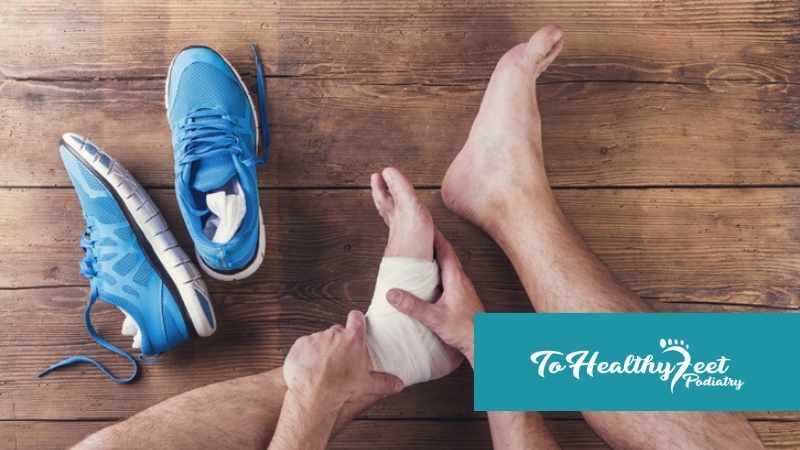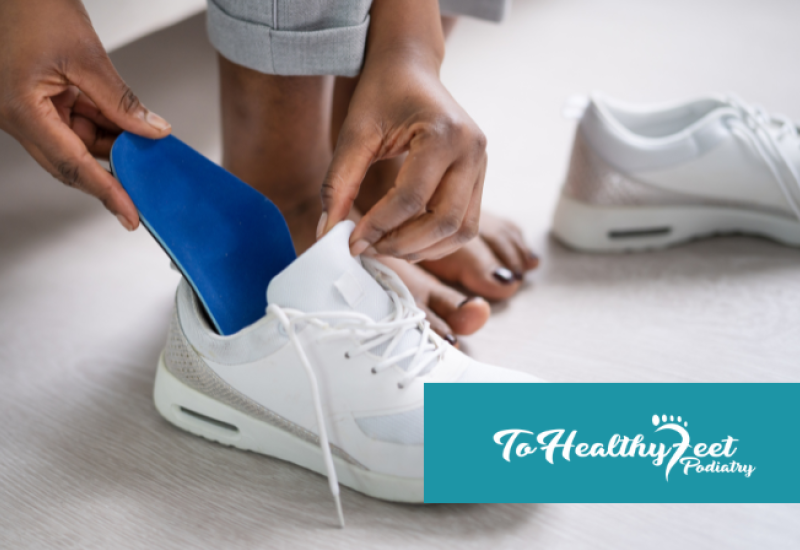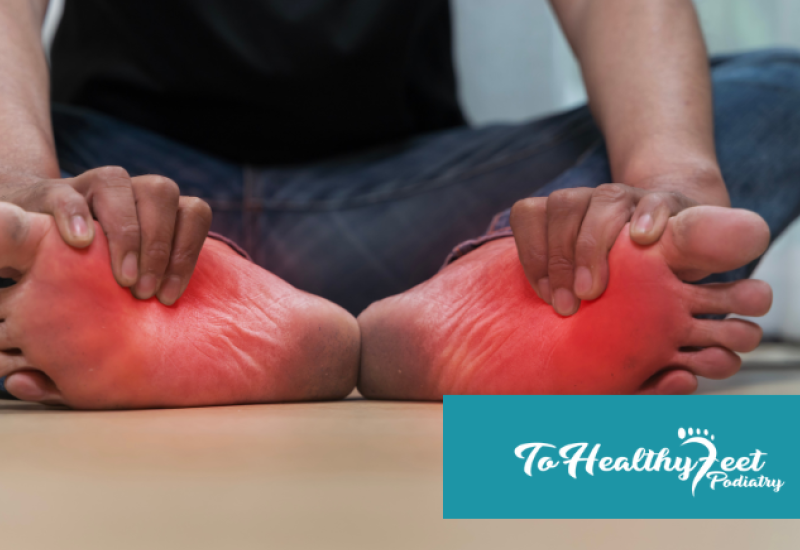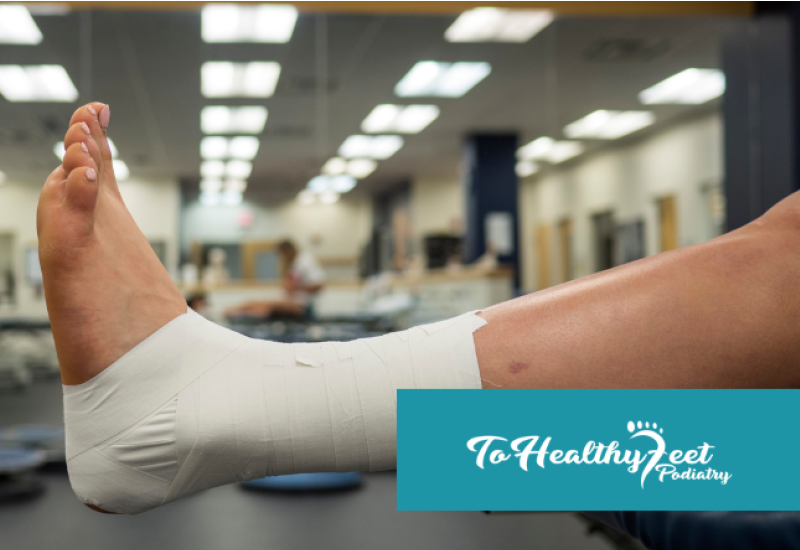Running a marathon is an incredible accomplishment, but it’s also one of the most demanding challenges you can undertake for your body, especially for your feet and ankles. Whether you’re a first-time runner or a seasoned marathoner, training and race day can expose your feet to repetitive stress and various injuries if you’re not careful. At To Healthy Feet Podiatry, we understand the toll marathon training can take on your feet. Here, we’ll walk you through some of the most common marathon-related foot injuries and provide practical tips for keeping your feet healthy and pain-free as you prepare for race day.
1. Prevent Plantar Fasciitis with Supportive Footwear and Stretching
Plantar fasciitis is one of the most common foot conditions among runners. It occurs when the plantar fascia, a thick band of tissue along the bottom of your foot, becomes inflamed due to overuse or improper footwear. This condition causes sharp pain in the heel, especially in the morning or after long runs, making it challenging to stay on your feet during training.
How to Prevent Plantar Fasciitis:
- Invest in Supportive Shoes: Choose running shoes that provide adequate arch support and cushioning for your specific foot type.
- Incorporate Stretching Exercises: Stretch your calves and feet daily to reduce tension in the plantar fascia. Simple exercises like toe stretches and calf raises can make a big difference.
- Consider Orthotics: If you have flat feet or high arches, custom orthotics can offer additional support and reduce strain on your plantar fascia.
2. Manage Achilles Tendonitis by Listening to Your Body
Achilles tendonitis is another common overuse injury for marathon runners, caused by inflammation of the Achilles tendon that connects your calf muscles to your heel. Symptoms include pain, stiffness, and swelling at the back of the heel. Achilles tendonitis can be particularly frustrating because it often gets worse with continued running.
How to Prevent Achilles Tendonitis:
- Gradually Increase Mileage: Avoid sudden increases in your training intensity or mileage to give your body time to adapt.
- Strengthen Your Calves: Strengthening exercises for your calves, such as calf raises, can help support the Achilles tendon and reduce strain.
- Listen to Your Body: If you notice any discomfort in your Achilles, take a rest day or switch to low-impact exercises to avoid worsening the injury.
3. Reduce the Risk of Stress Fractures with Proper Training Techniques
Stress fractures are tiny cracks in the bones of your feet, commonly affecting marathon runners due to repetitive impact. They often develop in the metatarsals (the long bones in the foot) and can lead to severe pain and discomfort if not managed early. Stress fractures are often the result of overtraining or poor running mechanics.
How to Prevent Stress & Fractures:
- Pace Yourself: Follow a well-structured training plan that gradually increases your mileage and incorporates rest days.
- Wear Cushioned Footwear: Shoes with adequate cushioning help absorb impact and reduce stress on your foot bones.
- Get a Biomechanical Assessment: Visiting a podiatrist for a gait and biomechanics assessment can help identify any misalignment or issues that might predispose you to stress fractures.
4. Avoid IT Band Syndrome with Balanced Strength Training
Iliotibial (IT) band syndrome occurs when the IT band, which runs along the outside of your thigh, becomes tight and rubs against the knee. Though this injury primarily affects the knee and thigh, it’s often related to poor foot alignment and weak hip muscles, which are common issues in marathon runners.
How to Prevent IT Band Syndrome:
- Strengthen Your Hips and Glutes: Strong hip and glute muscles help keep your legs properly aligned during running, reducing strain on the IT band.
- Focus on Foot Alignment: Using orthotics or supportive insoles can improve foot alignment and relieve stress on the IT band.
- Stretch Regularly: Regularly stretching the IT band, hips, and thighs can help prevent tightness and reduce friction.
5. Stop Blisters Before They Start
Blisters might seem minor compared to other injuries, but they can seriously hinder your performance and enjoyment during a marathon. Blisters are caused by friction, usually between your skin, socks, and shoes, and can be especially problematic during long-distance running.
How to Prevent Blisters:
- Choose Moisture-Wicking Socks: Invest in socks that wick away moisture to reduce friction and prevent blisters.
- Apply Anti-Blister Products: Products like foot powder or anti-chafing balms can minimize friction and keep your feet comfortable.
- Ensure a Good Shoe Fit: Shoes that fit well and have enough room in the toe box can prevent rubbing and blister formation.
Training for a marathon is an amazing journey, but protecting your feet is essential to reaching the finish line strong and pain-free. By taking preventive measures, such as investing in supportive footwear, pacing yourself, strengthening your muscles, and listening to your body, you can reduce your risk of common running injuries and keep your feet healthy throughout your training.
If you’re dealing with foot pain or want to optimize your foot health for marathon training, visit any of our To Healthy Feet Podiatry locations found in Grand Central, Times Square, Upper East Side and Downtown Manhattan. Our expert, award-winning, all-female lineup of podiatrists and foot and ankle team, specialize in sports injuries and can provide personalized guidance to keep you on track for a successful marathon. Let us help you cross the finish line with confidence and comfort—schedule an appointment with us today! Call us or contact us if you have any questions.
FAQ’s
Q: What can I do if I start feeling foot pain during marathon training?
A: Rest, ice the area, and consider low-impact cross-training. If pain persists, consult a podiatrist to prevent the injury from worsening.
Q: How can I strengthen my feet for marathon running?
A: Toe stretches, calf raises, and ankle circles help build strength and flexibility in your feet and ankles, which helps prevent injuries.
Q: When should I see a podiatrist if I’m training for a marathon?
A: If you experience persistent pain, swelling, or unusual discomfort, seeing a podiatrist early can prevent small issues from becoming severe injuries. Call us for more personalized information.




